#kaktovik
Text
Inuit schoolchildren invented a new number system, and now it's on the web
A group of Inuit middle schoolers invented a new number system that better fits their language (Iñupiaq), and now Unicode has adopted these symbols, meaning they can be used for typing, in apps, and on the web.

#Inuit#Iñupiaq#Kaktovik#numbers#counting#math#language#Indigenous#Native#I'm 𝋁𝋐 years old#lingblr#langblr
2K notes
·
View notes
Video
Mom and her triplets by Dick Hoskins
Via Flickr:
Kaktovik, Alaska Lots of polar bears have arrived to enjoy the left overs from the local Bowhead whale hunt.
#Alaska#Artic trip#B&W#Kaktovik#On1NoNoiseAI#editOn1#editPS#editTK8#polar bear#blackandwhite#WPD22animals#flickr#nature#animal#mammal#wildlife
50 notes
·
View notes
Photo

I think I’ve posted this before, but there was just an article published in Scientific American that’s behind a paywall and basically just repeats what’s below. What fascinates me is how the math is done using the numerals.
Anchorage Daily News, 2022-11-06:
Almost 30 years ago, a group of Kaktovik students invented a numbering system that reflected the way they counted in Iñupiaq and made math more intuitive for them. Soon, anyone in the world will be able to type Kaktovik numerals on a computer. [...]
Most countries use the Hindu-Arabic base-10 numbering system where numbers range from 0 to 9. But in Iñupiaq — as well as other Inuit and Yup’ik languages — the numbers go from 0 to 19, which makes it a base-20 system. [...]
"The Iñupiaq word for the number 20 is iñuiññaq, which represents a whole person," Judkins said. "You have all 20 appendages — your 10 fingers and your 10 toes. A lot of the classroom activities that we use now with this numbering system is in relation to those body parts and those appendages." [...]
Kaktovik students came up with digits from zero through 19, composed of straight strokes joined at sharp angles that you can write without lifting a pen. [...]
“We didn’t want them to look like any other numbers,” Solomon said. “It was our whole math class that did it together.” [...]
11 notes
·
View notes
Video
Polar Bear Yearling by David & Shiela Glatz
#Alaska#Apex Predator#Arctic#Arctic Alaska#Arctic Circle#Arctic National Wildlife Refuge#Barter Island#Bear#Beaufort Sea#Carnivore#Glatz Nature Photography#Great White Bear#Ice Bear#Kaktovic#Kaktovik#Nanook#Nanuk#Nanuq#Nature#North America#North Slope#Obligate Carnivore#Polar Bear#Polar Bears#Polar Bears and Northern Lights#Predator#United States#Ursus maritimus#WIld Animal#Wild Bear
36 notes
·
View notes
Link
In the remote Arctic almost 30 years ago, a group of Inuit middle school students and their teacher invented the Western Hemisphere’s first new number system in more than a century. The “Kaktovik numerals,” named after the Alaskan village where they were created, looked utterly different from decimal system numerals and functioned differently, too. But they were uniquely suited for quick, visual arithmetic using the traditional Inuit oral counting system, and they swiftly spread throughout the region. Now, with support from Silicon Valley, they will soon be available on smartphones and computers—creating a bridge for the Kaktovik numerals to cross into the digital realm.
Today’s numerical world is dominated by the Hindu-Arabic decimal system. This system, adopted by almost every society, is what many people think of as “numbers”—values expressed in a written form using the digits 0 through 9. But meaningful alternatives exist, and they are as varied as the cultures they belong to.
Continue Reading
30K notes
·
View notes
Text
"In the remote Arctic almost 30 years ago, a group of Inuit middle school students and their teacher invented the Western Hemisphere’s first new number system in more than a century. The “Kaktovik numerals,” named after the Alaskan village where they were created, looked utterly different from decimal system numerals and functioned differently, too. But they were uniquely suited for quick, visual arithmetic using the traditional Inuit oral counting system, and they swiftly spread throughout the region. Now, with support from Silicon Valley, they will soon be available on smartphones and computers—creating a bridge for the Kaktovik numerals to cross into the digital realm.
Today’s numerical world is dominated by the Hindu-Arabic decimal system. This system, adopted by almost every society, is what many people think of as “numbers”—values expressed in a written form using the digits 0 through 9. But meaningful alternatives exist, and they are as varied as the cultures they belong to.
The Alaskan Inuit language, known as Iñupiaq, uses an oral counting system built around the human body. Quantities are first described in groups of five, 10, and 15 and then in sets of 20. The system “is really the count of your hands and the count of your toes,” says Nuluqutaaq."
Read the full piece here: https://www.scientificamerican.com/article/a-number-system-invented-by-inuit-schoolchildren-will-make-its-silicon-valley-debut/
745 notes
·
View notes
Text
writing my story ideas in shavian is so sick, my notes look like ancient magician textbooks

#also with a mix of kaktovik iñupiaq numerals cuz they're just that cool#shavian#kaktovik iñupiaq numerals#writing#writing notes
1 note
·
View note
Text

Polar bear (Ursus maritimus) walking through the Arctic coastal village of Kaktovik. Barter Island, Alaska.
Photo © Steven Kazlowski
80 notes
·
View notes
Text

polar bear in Kaktovik, Alaska
4 notes
·
View notes
Note
I stumbled across this article this morning and thought you might find it interesting if you weren't already aware!
https://www.adn.com/alaska-life/2022/11/06/numerals-invented-by-kaktovik-students-can-now-be-used-digitally/
Ooh this is incredible. I have seen the numerals before but was never taught them. They do make the counting system (which i've had trouble with) much more intuitive. I wonder if there's any plans to design a typical playing card deck (the playing card suits already have Inupiaq names so why not) or perhaps even an Uno deck with the numerals to use as a teaching tool. Tricking kids into learning by making it a game is a time tested teaching method, after all.
For anyone who doesn't feel like looking at the article, it contains a chart for the numerals from zero to fifty, shown below

The "see note" by the zero is likely refering to the concept of zero as a number traditionally not existing in Inupiaq culture. The current Inupiaq word for the number zero is suitchuq which i believe means "is nothing"
The article also has a link to a virtual keyboard with the 0-9 Kaktovik numerals instead of Arabic ones, found here
#response#eskimo on main#i'm totally up for talking about inupiaq playing card vocab if anyone is interested
48 notes
·
View notes
Text
Take an Adventure and Change your Life

There are few adventures that are unique any longer. I, for one, am tired of seeing Las Vegas, the Maldives and other holiday spots litter our social media feeds. Great photography and great fun, but not a real adventure. We are sad when we hear someone say that they are going to go to so many places when they retire. Many people have become a viewer of photos rather than going out and doing it for themselves. Watcher of reels. Living their dreams through videos and pictures. It reminds me of elderly people looking over photos of times gone by and wishing time had not gone so fast. But this is worse. These are people that will never take an adventure. They live their lives by watching others. By dreaming their dreams.
They join travel blogs and travel sites so they can see what others are doing. They want to go. They could go. But they don't. Not because they don't have time or the money. We know many people with both but still never or rarely leave their homes. Not because of work. And not because of children. I am talking about middle-aged couples that have the time, money and resources.
And they still decide not to go anywhere. They decide to stop learning. And they decide to stop discovering.
They believe you have to be ultra-wealthy to see and experience what the world has to offer. You do not. They believe you have to be a world-class athlete to see and experience what the world has to offer. You do not. We can assure you that you do not need to be either of these to see unique and wonderful things in the world.
All you have to do is make a decision. To decide to go. It doesn't have to be luxurious but go. Get out into the game. Join life. Make your own dreams come true.
We have outlined four adventures that are unique, life-changing and affordable. These four are some of the most incredible adventures you could do.
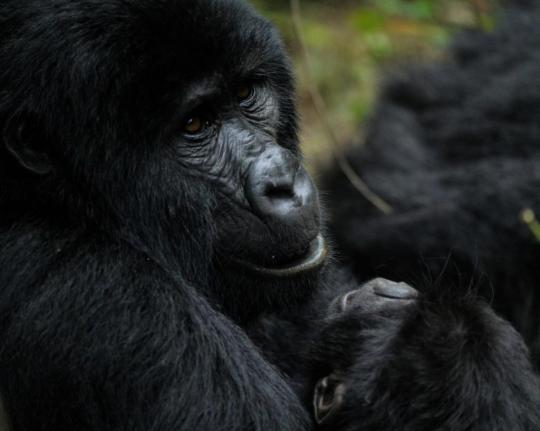
Trekking into the jungle to experience Gorillas is amazing experience.
Tracking Mountain Gorillas
Going on a Mountain Gorilla trek has to be on the top of many bucket lists. Traveling to the mountain areas of Uganda, Rwanda or the Congo. Encountering a mountain gorilla family is a great adventure and life changing. To be in the presence of these magnificent animals is awe-inspiring and humbling. We have put together different travel packages so everyone can enjoy this adventure.
We recommend Uganda as the place to see these incredible creatures. Uganda is a stable country. You can encounter Africa's Big 5 besides gorillas and chimps and the scenery is beautiful. There are many other adventures you can do in Uganda. You can see the world's most powerful waterfall. Boat down the Nile and encounter crocs and other wildlife. See the elusive Shoebill Stork that stands 5 feet tall. And encounter warm and wonderful people. We recommend Uganda to everyone no matter how fit you are, or your age. It is wonderful.
Go to LFTAdventures.com to book your Mountain Gorilla adventure.
Less than $2,500 per person for a 5-day adventure including all tracking permits for Gorillas and Chimps as well as searching for the Big 5 in Queen Elizabeth National Park. Includes a private driver/guide, all food, accommodations, and permits.

I couldn't believe I was a few feet away from 40 polar bears. This adventure is life changing.
Experiencing Polar Bears in the Arctic
Imagine flying in a small plane to the Arctic and staying in a tiny native village. By the end of two days, having experienced 40 to 60 polar bears. That is an adventure. That is something you will always remember and cherish. To see these magnificent animals is life changing.
The most popular places to see Polar Bears are Churchill in Canada. Svalbard which is part of Norway and Kaktovik in Arctic Alaska. We went to Kaktovik for an incredible adventure. Along the way we explored Denali and saw Grizzlies and Moose and the highest peak in North America. And the most incredible Alaskan and Arctic landscapes including the Brooks Range.
We have put together a once-a-year adventure. We take up to 6 people to experience Polar Bears, the Arctic and Alaska.
Go to LFTAdventures.com to see our Polar Bear and Arctic Adventure.
Less than $10,000 per person for all transportation within Alaska and internal flights to the Arctic. Includes all tours such as a glacier landing, 90 miles inside of Denali and Polar Bear viewing. Also includes all accommodations and most meals.

Finding Tigers in India
Imagine getting up in the morning and taken on safari and encountering the elusive Tiger. Tigers conjure up many ideas and have held a special significance to many cultures in the world. In many cultures, tigers are seen as powerful and dangerous animals. They are often associated with strength, courage, and bravery. To be in the presence of a wild tiger is an incredible, life-changing experience. You might also see elephants and leopards on your travels. We traveled to India, where about 80% of the world's wild tigers are. The two national parks we visited were Bandhavgarh National Park which has one of the healthiest populations of endangered Bengal tigers and Kanha National Park. Both parks are located in the central Indian state of Madhya Pradesh.
The cost of this trip in 2023 was approximately $5000 for both Kati and I. That includes flights to India, internal flights, experiencing the Taj Mahal and Agra, as well as 9 safari's to track tigers in the wild. All food, transportation and accommodations. We recommend booking with Pugdundee Safaris. They have great lodges, wonderful people and will help on choosing the right adventure for you.
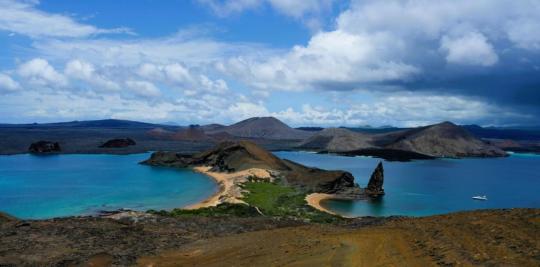
The landscape, the wildlife, and the incredible sea life that you can only see around the Galapagos.
Experiencing the wildlife in the Galapagos
Everyone has heard of the ship Beagle carrying Charles Darwin and his book the origin of species. Many of his findings were when he visited the Galapagos Islands. The total amount of time Darwin spent in the Galapagos was 5 weeks and he never returned. Almost 150 years later, Darwin is famous and so are the islands he visited.
I remember when planning to go to the Galapagos, almost everyone I knew was skeptical. Most thought that you cannot visit the islands. Others did not know exactly where the Galapagos are. The Galapagos are about 600 miles west of Ecuador. From our home in Florida, it was a direct flight to Guayaquil, Ecuador. We then took about a 90-minute flight to the Galapagos. It was that easy.
We know some take a cruise and that can be expensive. Also, we like to mix and mingle with the locals and get a real flavor for the areas that we visit. And we do not like cruises.
But this was perfect. We flew to the Galapagos and took day trips to the islands that we wanted to see. We snorkeled almost every day with sea lions and other marine wildlife. We saw blue-footed boobies, giant tortoises and even a blue whale. Red crabs and marine iguanas were everywhere we went. And the town of Santa Cruz was an amazing little place to explore and mix with the locals. There are regulations on all islands and beaches so most times we felt we had them all to ourselves. It was magical and not difficult to plan. There are four inhabited islands and two airports. From each of these, you can decide what islands you want to visit and what you want to see and experience.
We plan on returning even for a long weekend. There were so many more islands that we want to visit.
If you want an adventure as well as a beach and snorkeling holiday, you cannot go wrong with going to the Galapagos.
We spent approximately $4,000 for two for flights from Miami and accommodations in the Galapagos (through Airbnb) for a week. Also, that cost included 5 day trips, snorkeling, hiking and exploring different islands.
Our Final Word
Whether it is trekking for Gorillas or Tigers in the Wild, seeing the incredible wildlife in the Galapagos Islands, or experiencing polar bears, our list covers it all and we have done it. Imagine the stories you will have and the experiences you will do. A few feet from a gorilla, or a mother polar bear with three cubs. A Blue Whale crossing your path while sailing to see Blue Footed Boobies. Or watching a Tiger with its young. As Eleanor Roosevelt said, “THE PURPOSE OF LIFE IS TO LIVE IT, TO TASTE IT, TO EXPERIENCE TO THE UTMOST, TO REACH OUT EAGERLY AND WITHOUT FEAR FOR NEWER AND RICHER EXPERIENCE.” We believe that and hope more people decide to take her advice.
Related Posts
Read the full article
3 notes
·
View notes
Text
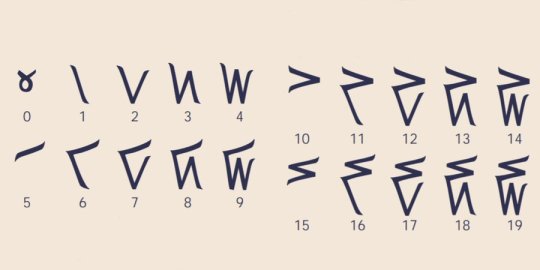
^ kaktovik iñupiaq numerals btw. i love them very much
14 notes
·
View notes
Text
How I Learned to Stop Worrying and Love Parabolas

A stylized representation of Cimar's core glyphs
| ⇇ first | ← previous | next → |
Cimar's native writing system is a right-to-left abugida. It was designed to be simple to a fault. It takes maybe 30 minutes to pick up, half that if you know IPA.
Cimar has a functional typeface that I used throughout the reference grammar and dictionary. It does require a Hebrew QWERTY layout, and there are a few bugs, but hey, it works! I've found it works best displayed white-on-black though it is legible either way.
Consonants
Consonants are written as parabolic glyphs. The direction the glyph points represents the place of articulation, and the diacritic in the center represents the manner. As a result, a clear pattern emerges.

Cimar's consonants arranged into an IPA table.
Vowels
Cimar's vowels are represented by diacritics which are placed over the parabolas. These diacritics are mandatory, but they aren't fused into the letter the same way it may be in a full abugida. But there's a catch -- the vowel mark is placed above the consonant that follows it, rather than the one that precedes it like in, well, basically every other writing system. It is read in a kind of backwards hopping motion "⤺"

Cimar's vowel diacritics. Note the use of /h/ as a placeholder.
In the event that no consonant follows the vowel, an /h/ glyph is used as a placeholder. Phonemic long vowels are represented by placing a vowel diacritic on an /h/, and placing a second diacritic on the next glyph.
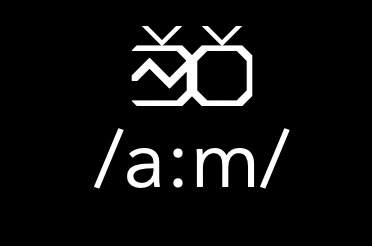
Numerals
Nothing too special here -- it's the Kaktovik system, but hexadecimal and with triangles. Each line on the top triangle represents a value of 4, and the bottom 1. This excludes the square/circle shapes which are placeholders for 0.
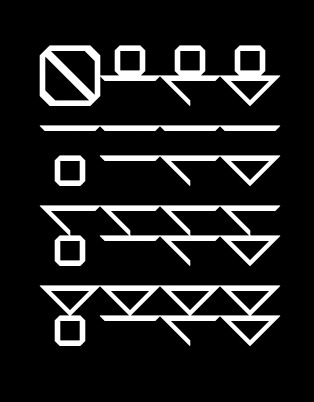
The numerals 0-F. (kor-jak). Note the left-to-right ordering. A crossbar was put through 0 in a recent revision to differentiate it from /h/.
From our perspective, these numbers are written left-to-right. In reality, Cimar does what Modern Hebrew does: it counts from lowest digit to highest instead of the other way around. So, for instance, they say and write the equivalent of "one and twenty" instead of "twenty one".
Numbers above F are always written using numerals rather than through spelling. Single digit numbers can be written either way. There is no standard, with one exception: when 0 is used as a negative particle, it's supposed to be spelled out as -kor. That doesn't stop people from writing it as -0 anyways.
Punctuation
Cimar's punctuation inventory is heavily stripped down, and multiple latin punctuation marks can be represented by one Cimar mark. There's also one small but important thing to note here: since Cimar lacks a hyphen, an asterisk (*) is used instead. This is important for things like case endings which are separated from the rest of the word by a hyphen in the romanization.

5 notes
·
View notes
Text
Instead of Seals, Polar Bears Are Now Eating Garbage (Inside Climate News)
As climate change reduces sea ice extent and forces polar bears to spend more time on land near human settlements, hungry bears are finding their way into dumps, eating food discarded by people. That is leading to more human-polar bear conflict and can leave bears in poorer health from eating nutrient-poor foods and ingesting plastics and metals along with it.
That’s according to a new report written by experts in polar bears and human-wildlife conflict, published this week in the journal Oryx. The experts outline several documented case studies of polar bears consuming human food. In a small town with a military base and research station near Hudson Bay in Canada, polar bears became accustomed to food availability and caused property damage and injuries to residents while seeking food in the town. In 2019, on the Arctic island of Novaya Zemlya in Russia, local authorities had to declare a state of emergency after dozens of hungry bears attempted to break into homes and buildings seeking food during a low sea-ice year. And in the Inupiat community of Kaktovik in Alaska, residents leave butchered whale carcasses out for the polar bears to eat, giving tourists an opportunity to see polar bears, but risking public safety and exposing polar bears to potentially being killed if they threaten people.
Much of this issue is driven by climate change reducing polar bears’ habitat and ability to hunt, the authors write in the report. As far as solutions to this issue, coauthor and National Park Service human-wildlife conflict specialist Rachel Mazur said that climate change is already happening to polar bears. “To avoid that, well, we kind of missed that boat. Now, what kind of mess have we created because of that?”
2 notes
·
View notes
Text

Playing chess using Inuit numbers would be a creative and educational twist on the traditional game. Here’s how you could set it up:
Assign Inuit Numbers to Chess Pieces:
Each chess piece is assigned an Inuit number. For example, you could use the numbers 1 to 6 for the pawns, and then 7 to 12 for the other pieces, with each number representing a different piece (e.g., 7 for the rook, 8 for the knight, etc.).
Create a Reference Chart:
Make a chart that shows which Inuit number corresponds to which chess piece. This will help players remember the assignments during the game.
Set Up the Chessboard:
Place the Inuit number tokens where you would normally place the chess pieces.
Play Chess:
Follow the standard rules of chess, but move the Inuit number tokens instead of the traditional chess pieces.
Keep Score:
If you want to add an educational component, you could keep score using the base-20 system associated with Inuit numbers1.
This method of playing chess could be a fun way to learn about Inuit culture and their numeral system while enjoying a classic game. Remember, the Kaktovik numerals are a base-20 system, so it might take some practice to get used to this new way of counting and playing1. Enjoy the game!
0 notes
